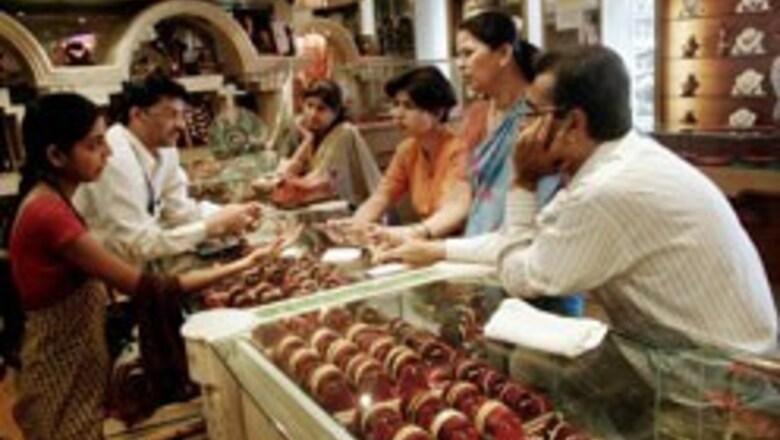
views
Mumbai: Soaring precious metal prices have led to a palpable change in the world's biggest gold-consuming market, with jewellery-loving Indians now buying more bullion in the form of bars and coins.
Though Indians' famed love for jewellery is under no serious threat - nearly 80 per cent of sales are in the form of jewellery - market watchers say a sizeable segment of the population is now beginning to look at gold purely as a financial asset.
This investment-driven buying also helps gold purchasers save money as they pay record prices, since jewellery adds another 25-30 percent to the cost to cover design and manufacturing.
"The current investment-led buying is unprecedented," said a consultant at Gold Field Mineral Services Ltd, Madhusudan Daga.
"Jewellery shops are now openly displaying the one kilo bar in their showcases." Daga said bullion, once favoured by wholesalers, is getting popular with two different types of consumers.
One set buys to convert it into jewellery for family weddings, while another group, newly rich professionals and investors profiting from India's expanding economy, buys it purely for the capital appreciation, he said.
Official figures spell out the trend.
World Gold Council (WGC) data shows that investment demand in India, though still smaller than jewellery, grew much faster in 2005.
Investment-led buying accounted for consumption of 135 tonnes of gold last year, up 34 percent over 2004, while jewellery demand was at 589 tonnes, up 14 percent on the previous year.
"This year, investment buying would be higher," said Sanjeev Agarwal, WGC managing director for the Indian subcontinent.
He pointed to strong sales of gold coins in the Akshaya Trithiai festival on April 30, a big religious day for gold purchases, especially in southern India.
Several banks sold bullion through innovative methods for the festival.
Bank of Nova Scotia chose that day to launch its coins, marking its entry into retail bullion.
Gold bars have always been out of the reach of ordinary Indians, seen until the late 1980s only in Bollywood movies as smugglers brought them in on helicopters and ships.
Spectrum Demand
Jewellers in Mumbai said they have seen good sales of coins and bars of all weights - from one gram to one kilogram - since prices started shooting up around October last year.
"Depending on their budget, people have been buying coins and bars," said Kishore Abagule, a salesman at Chintamanis, a large jewellery shop in busy Dadar, a middle-class central Mumbai suburb.
Prices are displayed daily on fresh computer print-outs at Chintamanis.
On Friday, the one kilo bar was quoted at Rs 1.05 million.
Prices were at an all-time high in India on Thursday with gold of .999 purity quoted at Rs 10,500 for 10 grams in the Mumbai market - a whopping 72 per cent rise over a year ago and a 37 per cent jump since January.
The spot market is likely to see a new record on Friday when it opens on the back of the global prices.
On the futures exchange, June gold was at Rs 10,595 per 10 grams, down 38 rupees over the previous day.
While rising prices have opened many Indians' eyes to gold as a financial instrument, the view of gold is also changing, especially in urban areas.
"Gold has become one more item in the investors' menu," said Rajan Venkatesh, marketing director - bullion, at Bank of Nova Scotia.
"It is definitely here to stay and in future people would invest in it by comparing its rate of returns over other financial products.
"However, the desire for gold as both an investment and jewellery overlaps in rural India.
"In villages, gold is a status symbol," said Daman Prakash, convenor of the Tamil Nadu Bullion Forum.
"People say 'What is the point of possessing gold if you can't wear it?'"
The rural consumer "who adorns herself with each and every item of gold she possesses at weddings and celebrations", according to Prakash, is willing to pay a premium for jewellery.














Comments
0 comment